-
 Bitcoin
Bitcoin $106,754.6083
1.33% -
 Ethereum
Ethereum $2,625.8249
3.80% -
 Tether USDt
Tether USDt $1.0001
-0.03% -
 XRP
XRP $2.1891
1.67% -
 BNB
BNB $654.5220
0.66% -
 Solana
Solana $156.9428
7.28% -
 USDC
USDC $0.9998
0.00% -
 Dogecoin
Dogecoin $0.1780
1.14% -
 TRON
TRON $0.2706
-0.16% -
 Cardano
Cardano $0.6470
2.77% -
 Hyperliquid
Hyperliquid $44.6467
10.24% -
 Sui
Sui $3.1128
3.86% -
 Bitcoin Cash
Bitcoin Cash $455.7646
3.00% -
 Chainlink
Chainlink $13.6858
4.08% -
 UNUS SED LEO
UNUS SED LEO $9.2682
0.21% -
 Avalanche
Avalanche $19.7433
3.79% -
 Stellar
Stellar $0.2616
1.64% -
 Toncoin
Toncoin $3.0222
2.19% -
 Shiba Inu
Shiba Inu $0.0...01220
1.49% -
 Hedera
Hedera $0.1580
2.75% -
 Litecoin
Litecoin $87.4964
2.29% -
 Polkadot
Polkadot $3.8958
3.05% -
 Ethena USDe
Ethena USDe $1.0000
-0.04% -
 Monero
Monero $317.2263
0.26% -
 Bitget Token
Bitget Token $4.5985
1.68% -
 Dai
Dai $0.9999
0.00% -
 Pepe
Pepe $0.0...01140
2.44% -
 Uniswap
Uniswap $7.6065
5.29% -
 Pi
Pi $0.6042
-2.00% -
 Aave
Aave $289.6343
6.02%
What is the difference between NFT and digital collectibles? A must-read guide for beginners
NFTs are unique digital assets built on blockchain that prove ownership and authenticity, enabling true digital collectibles with verifiable scarcity and cross-platform interoperability.
Jun 19, 2025 at 09:42 pm

Understanding the Basics of NFTs
NFTs, or Non-Fungible Tokens, are unique digital assets that represent ownership of a specific item or piece of content on the blockchain. Unlike cryptocurrencies such as Bitcoin or Ethereum, which are fungible and can be exchanged one-for-one, each NFT has distinct properties and cannot be directly replaced by another token. These tokens are typically built using blockchain standards like ERC-721 or ERC-1155 on the Ethereum network, allowing them to carry metadata that differentiates each from others.
One key feature of NFTs is their ability to prove authenticity and ownership through decentralized ledger technology. This makes them ideal for representing digital art, virtual real estate, music, and more. The underlying blockchain ensures that ownership records are immutable and transparent, making it possible to verify who owns what without relying on a central authority.
Defining Digital Collectibles
Digital collectibles refer to any unique or limited-edition digital items that users can own, trade, or sell. While this term predates the rise of blockchain technology, it has evolved significantly with the integration of NFTs. Before NFTs became mainstream, digital collectibles could include rare in-game items, profile icons, or exclusive skins in video games — often stored on centralized servers controlled by game developers.
What sets modern digital collectibles apart is their integration with blockchain-based systems, ensuring true ownership and scarcity. For example, CryptoKitties, an early blockchain-based game, allowed players to breed and trade virtual cats — each represented as a unique NFT. These digital collectibles derive value from their rarity, aesthetics, and demand within online communities.
Key Differences Between NFTs and Digital Collectibles
While all NFTs can be considered digital collectibles, not all digital collectibles are NFTs. This distinction lies in the technical implementation and infrastructure used to manage ownership. Traditional digital collectibles may exist solely within a platform’s ecosystem and are subject to the rules and control of the issuing company. In contrast, NFTs operate on decentralized networks, giving owners full control over their assets and enabling cross-platform transfers.
Another important difference is interoperability. Because NFTs are built on open standards, they can be moved across various marketplaces and platforms. This level of freedom is generally not available with traditional digital collectibles, which are often locked into proprietary environments.
Use Cases for NFTs Beyond Collectibles
Although NFTs are frequently associated with digital collectibles, their applications extend far beyond simple trading or gaming. Artists and creators use NFTs to tokenize their work, allowing them to retain copyright while selling verifiable ownership. Musicians have released albums as NFTs, offering fans exclusive access or experiences. Additionally, virtual land in metaverse platforms like Decentraland or The Sandbox is sold as NFTs, enabling true digital property rights.
NFTs also serve functional purposes in decentralized finance (DeFi), where they can act as collateral for loans or provide access to exclusive services. Their versatility makes them a powerful tool for representing unique digital or physical assets in a trustless environment.
How Digital Collectibles Operate Without Blockchain
Before the emergence of blockchain-based NFTs, digital collectibles existed primarily in centralized systems. Gamers would earn or purchase rare items within games, but these items were stored on company-controlled servers. If a game shut down or a developer changed policies, users could lose access to their hard-earned collectibles.
With blockchain technology, digital collectibles gain permanence and portability. Even if a game or platform ceases operation, the NFT remains on the blockchain, allowing owners to retain and potentially resell their items elsewhere. This fundamental shift has redefined digital ownership, giving users unprecedented control over their virtual possessions.
Technical Aspects That Define NFTs
At the core of every NFT is a smart contract deployed on a blockchain. This contract contains the logic that governs how the NFT behaves, including who can transfer it, how many copies exist, and whether it can be modified. The metadata associated with an NFT often includes details like name, description, image link, and attributes, which determine its uniqueness.
Unlike standard tokens, NFTs are indivisible, meaning you cannot send half of one — you either own it fully or not at all. This characteristic aligns well with collectibles, where partial ownership doesn’t make sense. Furthermore, the blockchain ensures provenance tracking, so buyers can verify the history of an NFT before purchasing.
FAQs
Can I turn any digital file into an NFT?
Yes, you can tokenize almost any digital file — such as images, videos, audio files, or documents — into an NFT. However, you must ensure you have the rights to the content before minting it, as unauthorized minting may violate copyright laws.
Are all NFTs considered digital collectibles?
Most NFTs can be classified as digital collectibles due to their unique nature and collectible appeal. However, some NFTs serve utility functions, such as granting access to events or unlocking features in apps, which may not fit the traditional definition of a collectible.
Do I need cryptocurrency to buy NFTs?
Yes, most NFT transactions require payment in cryptocurrency, especially Ethereum or other blockchain-native tokens depending on the platform. You will also need a compatible wallet, such as MetaMask or Trust Wallet, to interact with NFT marketplaces.
Can digital collectibles exist outside of blockchain?
Yes, digital collectibles existed long before blockchain. For instance, rare skins in games like Fortnite or CS:GO are examples of non-blockchain digital collectibles. However, these items are usually controlled by the platform and lack the verifiable ownership provided by blockchain-based NFTs.
Disclaimer:info@kdj.com
The information provided is not trading advice. kdj.com does not assume any responsibility for any investments made based on the information provided in this article. Cryptocurrencies are highly volatile and it is highly recommended that you invest with caution after thorough research!
If you believe that the content used on this website infringes your copyright, please contact us immediately (info@kdj.com) and we will delete it promptly.
- Ethereum Price Expectations: Stuck in Neutral or Ready to Rumble?
- 2025-06-20 02:45:13
- Bitcoin's Rally Stalls? AI Tokens Like RUVI & OZAK Steal the Show
- 2025-06-20 02:45:13
- Story Crypto Price Down Today: What's Going On?
- 2025-06-20 02:50:12
- Little Pepe, Meme Coins, and Shiba Inu: What's the Buzz in the Crypto Jungle?
- 2025-06-20 03:10:12
- Troller Cat: The Meme Coin Rickrolling Its Way to ROI Riches
- 2025-06-20 03:25:12
- DePIN, Shared Infrastructure, New Era: Building the Future, Together
- 2025-06-20 02:25:12
Related knowledge

What is the difference between NFT and digital collectibles? A must-read guide for beginners
Jun 19,2025 at 09:42pm
Understanding the Basics of NFTsNFTs, or Non-Fungible Tokens, are unique digital assets that represent ownership of a specific item or piece of content on the blockchain. Unlike cryptocurrencies such as Bitcoin or Ethereum, which are fungible and can be exchanged one-for-one, each NFT has distinct properties and cannot be directly replaced by another to...
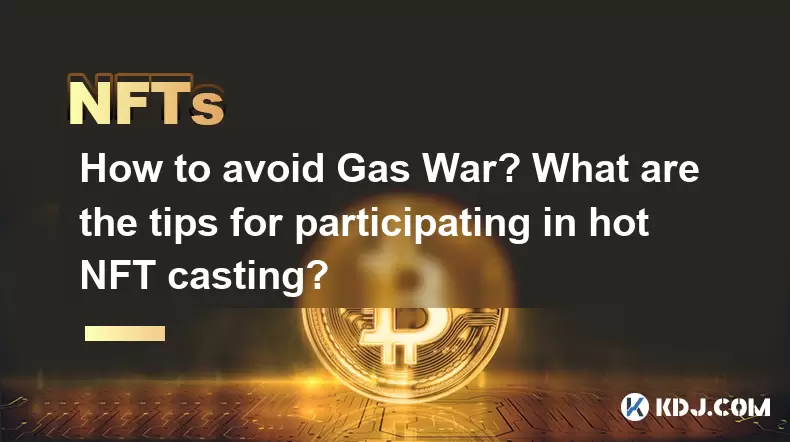
How to avoid Gas War? What are the tips for participating in hot NFT casting?
Jun 19,2025 at 11:00pm
Understanding Gas Wars in the NFT SpaceIn the world of NFT casting and minting, a Gas War refers to the intense competition among users on blockchain networks like Ethereum, where participants raise their gas fees to prioritize transaction confirmations. This typically occurs during high-demand NFT drops, especially when limited-edition digital assets a...
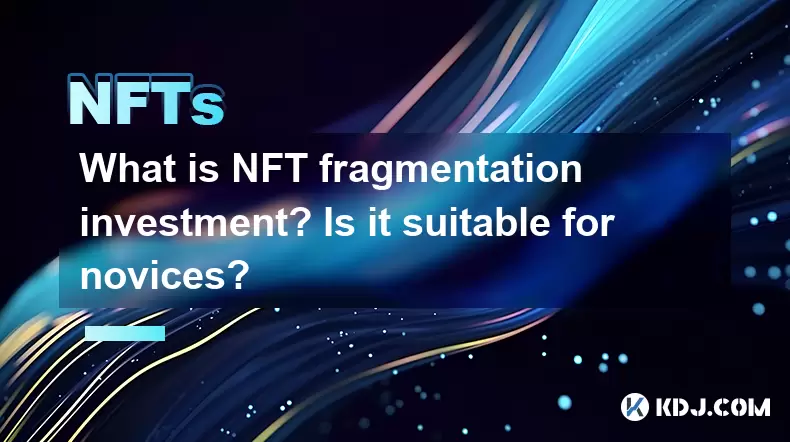
What is NFT fragmentation investment? Is it suitable for novices?
Jun 20,2025 at 02:01am
Understanding NFT Fragmentation InvestmentNFT fragmentation investment refers to the process of dividing a single non-fungible token (NFT) into multiple smaller, fungible tokens. This allows investors to purchase portions of an NFT rather than having to buy the entire asset outright. The concept is similar to buying shares in a company — instead of owni...
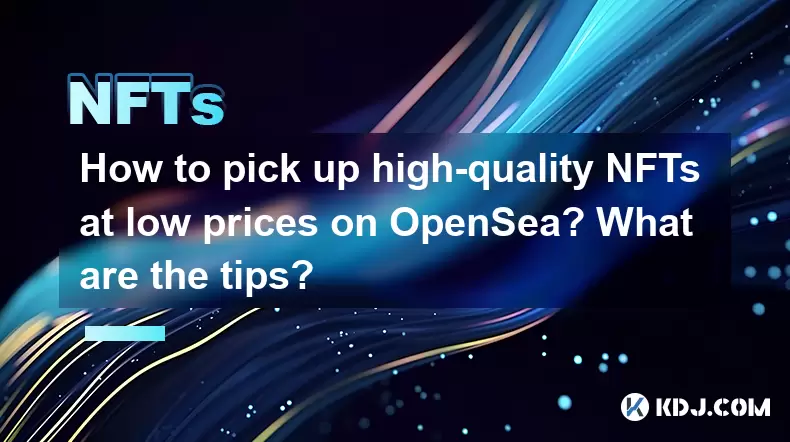
How to pick up high-quality NFTs at low prices on OpenSea? What are the tips?
Jun 19,2025 at 10:49am
Understanding What Makes an NFT High-QualityWhen navigating OpenSea, it's essential to understand what defines a high-quality NFT. High-quality NFTs often refer to digital assets that have unique artistic value, are created by reputable artists, or belong to collections with strong community backing. These NFTs typically exhibit low supply, active tradi...
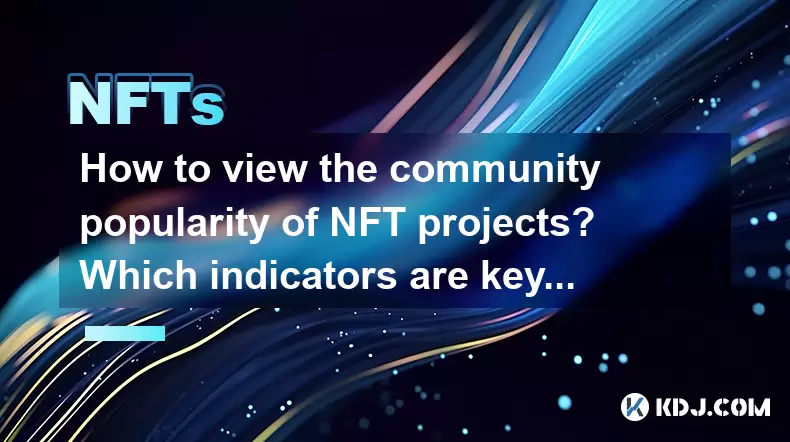
How to view the community popularity of NFT projects? Which indicators are key?
Jun 19,2025 at 08:00pm
Understanding Community Popularity in NFT ProjectsCommunity popularity is a critical metric for evaluating the potential success and long-term viability of NFT projects. Unlike traditional investments, where financial statements and revenue models dominate decision-making, NFTs thrive on community engagement and social sentiment. Therefore, understandin...
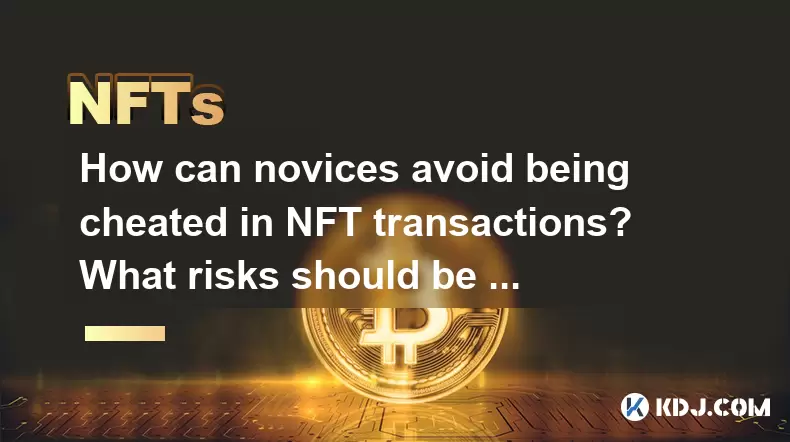
How can novices avoid being cheated in NFT transactions? What risks should be paid attention to?
Jun 20,2025 at 01:28am
Understanding the NFT Landscape Before InvestingBefore engaging in any NFT transactions, novices should take time to understand what NFTs are and how they function within the blockchain ecosystem. NFTs (Non-Fungible Tokens) represent ownership of a unique digital item or asset, often stored on blockchains like Ethereum. However, not all NFTs have intrin...

What is the difference between NFT and digital collectibles? A must-read guide for beginners
Jun 19,2025 at 09:42pm
Understanding the Basics of NFTsNFTs, or Non-Fungible Tokens, are unique digital assets that represent ownership of a specific item or piece of content on the blockchain. Unlike cryptocurrencies such as Bitcoin or Ethereum, which are fungible and can be exchanged one-for-one, each NFT has distinct properties and cannot be directly replaced by another to...

How to avoid Gas War? What are the tips for participating in hot NFT casting?
Jun 19,2025 at 11:00pm
Understanding Gas Wars in the NFT SpaceIn the world of NFT casting and minting, a Gas War refers to the intense competition among users on blockchain networks like Ethereum, where participants raise their gas fees to prioritize transaction confirmations. This typically occurs during high-demand NFT drops, especially when limited-edition digital assets a...

What is NFT fragmentation investment? Is it suitable for novices?
Jun 20,2025 at 02:01am
Understanding NFT Fragmentation InvestmentNFT fragmentation investment refers to the process of dividing a single non-fungible token (NFT) into multiple smaller, fungible tokens. This allows investors to purchase portions of an NFT rather than having to buy the entire asset outright. The concept is similar to buying shares in a company — instead of owni...

How to pick up high-quality NFTs at low prices on OpenSea? What are the tips?
Jun 19,2025 at 10:49am
Understanding What Makes an NFT High-QualityWhen navigating OpenSea, it's essential to understand what defines a high-quality NFT. High-quality NFTs often refer to digital assets that have unique artistic value, are created by reputable artists, or belong to collections with strong community backing. These NFTs typically exhibit low supply, active tradi...

How to view the community popularity of NFT projects? Which indicators are key?
Jun 19,2025 at 08:00pm
Understanding Community Popularity in NFT ProjectsCommunity popularity is a critical metric for evaluating the potential success and long-term viability of NFT projects. Unlike traditional investments, where financial statements and revenue models dominate decision-making, NFTs thrive on community engagement and social sentiment. Therefore, understandin...

How can novices avoid being cheated in NFT transactions? What risks should be paid attention to?
Jun 20,2025 at 01:28am
Understanding the NFT Landscape Before InvestingBefore engaging in any NFT transactions, novices should take time to understand what NFTs are and how they function within the blockchain ecosystem. NFTs (Non-Fungible Tokens) represent ownership of a unique digital item or asset, often stored on blockchains like Ethereum. However, not all NFTs have intrin...
See all articles

























































































